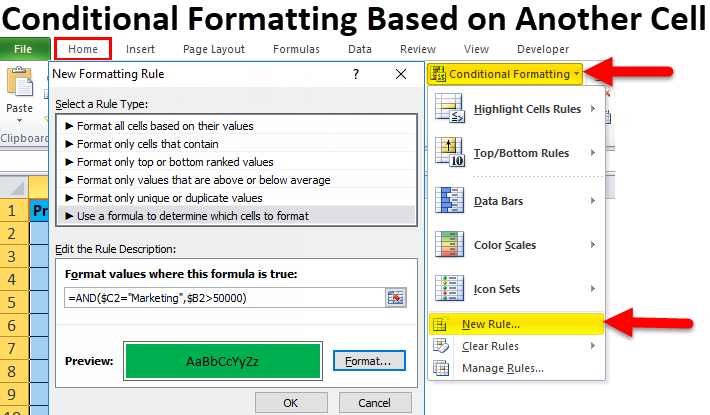How to Use Excel Conditional Formatting to Make Your Assignments Stand Out|2025
How to use Excel conditional formatting is a powerful tool that can enhance the presentation of your assignments, making them visually appealing and easy to interpret. By applying specific formatting to cells that meet certain criteria, you can highlight important data, detect trends, and draw attention to key metrics. This guide will provide a step-by-step tutorial on using conditional formatting, examples of its applications, and why Getspsshelp.com is the best resource for mastering these techniques.
What is Conditional Formatting?
Conditional formatting in Excel allows you to apply specific formatting to cells based on their values or the values in other cells. This dynamic formatting helps in emphasizing certain parts of your data, which is particularly useful for large datasets.
Benefits of Conditional Formatting
- Enhanced Readability: Makes it easier to identify key data points.
- Visual Appeal: Improves the overall look of your assignments.
- Data Analysis: Helps in spotting trends and anomalies quickly.
How to Apply Conditional Formatting in Excel
Step-by-Step Guide
- Select the Range: Highlight the range of cells you want to format.
- Open Conditional Formatting: Go to the “Home” tab, and click on “Conditional Formatting” in the “Styles” group.
- Choose a Rule Type: Select from options like “Highlight Cell Rules,” “Top/Bottom Rules,” “Data Bars,” “Color Scales,” and “Icon Sets.”
- Set the Rule: Define the criteria for the rule. For example, “Format cells that are greater than 100.”
- Apply the Formatting: Choose the formatting style (e.g., font color, fill color, border) and click “OK.”
Excel Conditional Formatting Formula If
You can use formulas in conditional formatting to apply more complex rules.
Example: Highlight cells where sales are greater than average sales.
= B2 > AVERAGE(B:B)What is Conditional Formatting in Excel with Example
Conditional formatting allows for dynamic changes based on cell values.
Example: Highlight overdue tasks by changing the cell color if the due date is past today’s date.
= A1 < TODAY()Excel Conditional Formatting Formula Based on Another Cell
You can create rules based on the value of another cell.
Example: Highlight a row if the value in column B is “Completed.”
= $B2 = "Completed"Excel Conditional Formatting If Cell Contains Specific Text
Highlight cells containing specific text to draw attention to important information.
Example: Highlight cells in column A that contain the word “Urgent.”
= SEARCH("Urgent", A1)Types of Conditional Formatting in Excel
- Highlight Cell Rules: Format cells based on specific criteria (e.g., greater than, less than, equal to).
- Top/Bottom Rules: Highlight top or bottom values, percentages, or averages.
- Data Bars: Add bars inside cells to visually represent the value.
- Color Scales: Use a color gradient to show value ranges.
- Icon Sets: Add icons to cells based on value thresholds.
How to Highlight Cells in Excel Based on Value of Another Cell
Conditional formatting can also be used to highlight cells based on the value of another cell.
Example: Highlight cells in column A if the corresponding cell in column B exceeds 100.
= $B1 > 100Practical Applications of Conditional Formatting
Data Visualization
Use conditional formatting to create heatmaps, making it easier to spot patterns and trends in your data.
Assignment Formatting
Make your assignments stand out by highlighting key points, such as important deadlines or significant figures.
Error Detection
Highlight potential errors in data entry, such as missing or out-of-range values.
Resources for Learning Conditional Formatting
Excel Conditional Formatting Examples: Explore practical examples to see how conditional formatting can be applied effectively.
Conditional Formatting Excel PDF: Download comprehensive guides and tutorials in PDF format for offline reference.
Advanced Excel Tips: Learn advanced techniques, including complex formulas and custom formatting rules.
Why Getspsshelp.com is the Best Resource for Learning Conditional Formatting
At Getspsshelp.com, we offer expert guidance and comprehensive resources to help you master conditional formatting in Excel. Here’s why we are the best choice:
- Expert Support: Our team of professionals provides personalized assistance and detailed tutorials.
- Comprehensive Resources: Access a wide range of learning materials, including step-by-step guides and downloadable content.
- User-Friendly Platform: Easily navigate our website to find exactly what you need for your assignments.
- Proven Success: Join countless students who have successfully improved their Excel skills with our help.
Conclusion
Mastering Excel’s conditional formatting can significantly enhance the presentation and effectiveness of your assignments. This guide has provided a comprehensive overview of how to use conditional formatting, practical applications, and advanced techniques. For expert help and additional learning resources, visit Getspsshelp.com—your ultimate partner in academic success.
Needs help with similar assignment?
We are available 24x7 to deliver the best services and assignment ready within 3-4 hours? Order a custom-written, plagiarism-free paper





